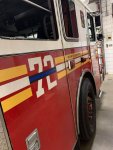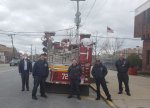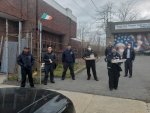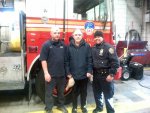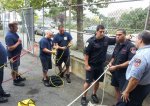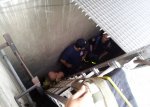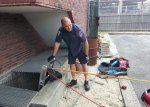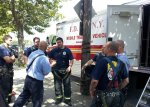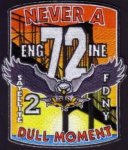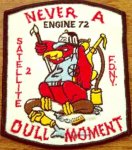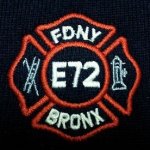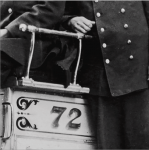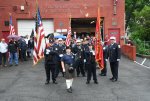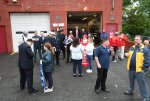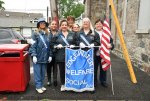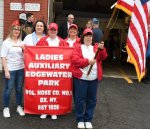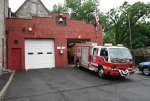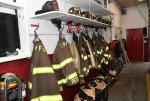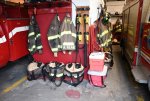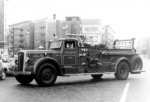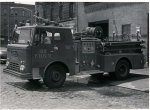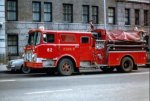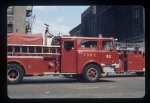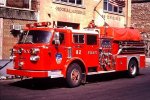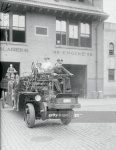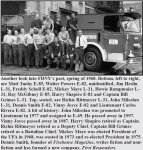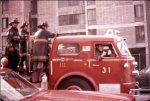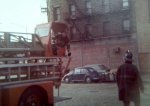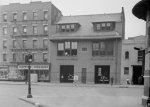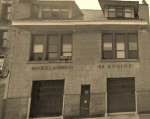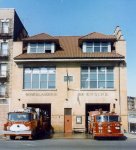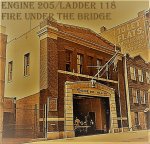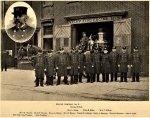You are using an out of date browser. It may not display this or other websites correctly.
You should upgrade or use an alternative browser.
You should upgrade or use an alternative browser.
FDNY and NYC Firehouses and Fire Companies - 2nd Section
- Thread starter mack
- Start date
ENGINE 72/SATELLITE 2 3929 TREMONT AVENUE THROGGS NECK, BRONX DIVISION 7, BATTALION 20 “NEVER A DULL MOMENT”
THROGGS NECK

From Wikipedia, the free encyclopedia
Throggs Neck (also known as Throgs Neck) is a neighborhood and peninsula in the south-eastern portion of the borough of the Bronx in New York City. It is bounded by the East River and Long Island Sound to the south and east, Westchester Creek on the west, and Baisley Avenue and the Bruckner Expressway on the north.
The neighborhood is part of Bronx Community District 10, and its ZIP Code is 10465. Throggs Neck is patrolled by the 45th Precinct of the New York City Police Department.
Name
The spelling of the area has been historically disputed. The traditionally correct spelling is with two Gs, and while NYC Parks Commissioner and Triborough Bridge and Tunnel Authority Chairman Robert Moses officially shortened it to one G after deciding that two would not fit on many of the street signs, long-time residents continue to recognize the traditional spelling.
The peninsula was called Vriedelandt, "Land of Peace", by the New Netherlanders. The current name comes from John Throckmorton, English immigrant and associate of Roger Williams in Massachusetts and Rhode Island. The Dutch allowed Throckmorton to settle in this peripheral area of New Amsterdam in 1642, with thirty-five others. At this time, the peninsula was also known as Maxson's Point as the Maxson family lived there. Many of the settlers, including Anne Hutchinson and her family, were murdered in a 1643 uprising of Native Americans. Throckmorton returned to Rhode Island. In 1668, the peninsula appeared on maps as "Frockes Neck". The peninsula was virtually an island at high tide.
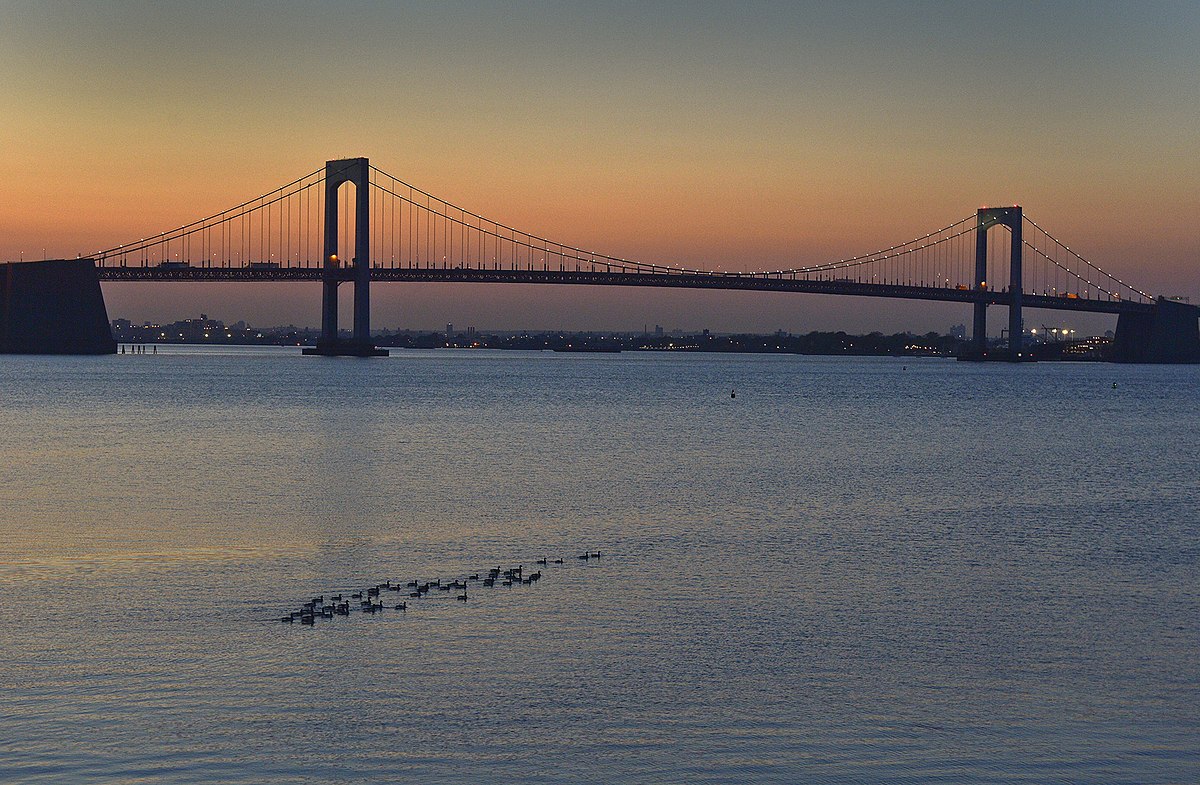
 en.wikipedia.org
en.wikipedia.org
FROG'S NECK MAP 1776
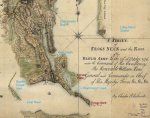
THROGGS NECK

THROGGS NECK MAP

FDNY FIREHOUSES

THROGGS NECK

From Wikipedia, the free encyclopedia
Throggs Neck (also known as Throgs Neck) is a neighborhood and peninsula in the south-eastern portion of the borough of the Bronx in New York City. It is bounded by the East River and Long Island Sound to the south and east, Westchester Creek on the west, and Baisley Avenue and the Bruckner Expressway on the north.
The neighborhood is part of Bronx Community District 10, and its ZIP Code is 10465. Throggs Neck is patrolled by the 45th Precinct of the New York City Police Department.
Name
The spelling of the area has been historically disputed. The traditionally correct spelling is with two Gs, and while NYC Parks Commissioner and Triborough Bridge and Tunnel Authority Chairman Robert Moses officially shortened it to one G after deciding that two would not fit on many of the street signs, long-time residents continue to recognize the traditional spelling.
The peninsula was called Vriedelandt, "Land of Peace", by the New Netherlanders. The current name comes from John Throckmorton, English immigrant and associate of Roger Williams in Massachusetts and Rhode Island. The Dutch allowed Throckmorton to settle in this peripheral area of New Amsterdam in 1642, with thirty-five others. At this time, the peninsula was also known as Maxson's Point as the Maxson family lived there. Many of the settlers, including Anne Hutchinson and her family, were murdered in a 1643 uprising of Native Americans. Throckmorton returned to Rhode Island. In 1668, the peninsula appeared on maps as "Frockes Neck". The peninsula was virtually an island at high tide.

Throggs Neck - Wikipedia
 en.wikipedia.org
en.wikipedia.org
FROG'S NECK MAP 1776

THROGGS NECK

THROGGS NECK MAP

FDNY FIREHOUSES

EDGEWATER PARK VOLUNTEER FIRE DEPARTMENT BRONX, NY
The Edgewater Park Volunteer Fire Department is a Bronx-based Volunteer Fire Department that was established in 1922 in the Edgewater Park community.
The EPVFD is a 501(c)3 charitable organization whose mission is to protect the lives and property of the residents of Edgewater Park. The Departments motto is "Neighbors Helping Neighbors" as it is a 100% volunteer organization and one of 9 remaining VFD's still operating in New York City.
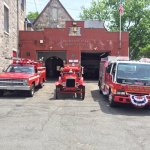
FORMER APPARATUS
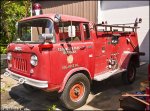
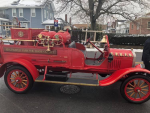

MEMBERS
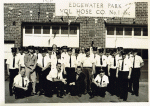
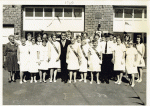

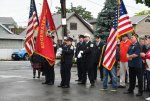


The Edgewater Park Volunteer Fire Department is a Bronx-based Volunteer Fire Department that was established in 1922 in the Edgewater Park community.
The EPVFD is a 501(c)3 charitable organization whose mission is to protect the lives and property of the residents of Edgewater Park. The Departments motto is "Neighbors Helping Neighbors" as it is a 100% volunteer organization and one of 9 remaining VFD's still operating in New York City.

FORMER APPARATUS



MEMBERS






Last edited:
It was built as a firehouse, not any other purpose.Ladder 57
ENGINE 205/LADDER 118 FIREHOUSE 74-76 MIDDAGH STREET BROOKLYN HEIGHTS, BROOKLYN DIVISION 11, BATTALION 32 “FIRE UNDER THE BRIDGE”
Engine 5 BFD organized 160 Pierrepont Street 1869
Engine 5 BFD became Engine 5 FDNY 1898
Engine 5 became Engine 105 1899
Engine 105 became Engine 205 1913
Engine 205 moved 274 Hicks Street at Engine 224 1925
Engine 205 new firehouse 74 Middagh Street 1929
Engine 205 disbanded 1975
Engine 205 reorganized 74 Middagh Street 1975
Ladder 68 organized 365 Jay Street 1901
Ladder 68 became Ladder 118 1913
Ladder 118 new firehouse 76 Middagh Street w/Engine 205 1929
Ladder 118 moved 172 Tillary Street at Ladder 110 1992
Ladder 118 moved 76 Middagh Street at Engine 205 1993
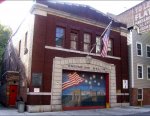
Engine 5 BFD organized 160 Pierrepont Street 1869
Engine 5 BFD became Engine 5 FDNY 1898
Engine 5 became Engine 105 1899
Engine 105 became Engine 205 1913
Engine 205 moved 274 Hicks Street at Engine 224 1925
Engine 205 new firehouse 74 Middagh Street 1929
Engine 205 disbanded 1975
Engine 205 reorganized 74 Middagh Street 1975
Ladder 68 organized 365 Jay Street 1901
Ladder 68 became Ladder 118 1913
Ladder 118 new firehouse 76 Middagh Street w/Engine 205 1929
Ladder 118 moved 172 Tillary Street at Ladder 110 1992
Ladder 118 moved 76 Middagh Street at Engine 205 1993

ENGINE 205/LADDER 118 FIREHOUSE 74-76 MIDDAGH STREET BROOKLYN HEIGHTS, BROOKLYN DIVISION 11, BATTALION 32 “FIRE UNDER THE BRIDGE”
BROOKLYN FIRE DEPARTMENT - STEAM FIRE ENGINE 5
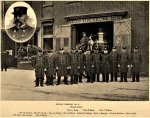
ENGINE COMPANY NO. 5
Perhaps the most centrally situated of the two score headquarters of the fire-companies, upon which the city depends for protection, is the house of Engine Company No. 5, in Pierrepont Street near Fulton. Many hundreds of times have the doors been thrown open and the engine dashed forth to answer alarms from all parts of the city. Engine No. 5 responds to first-alarms in the territory in and contiguous to Fulton Street, from Clark Street to Hudson Avenue, which includes much of the most valuable property in the city. In this region are the public buildings, including the City Hall, Court House, Municipal Building, Hall of Records, and the new Federal Building; the principal places of amusement in the Western District, including the Academy of Music, Grand Opera House, Park Theatre, Star Theatre, and the recently completed Columbia Theatre; all the chief hotels of the city; such important structures as the Brooklyn Library, the Long Island Historical Society's building, the Hamilton and Germania clubhouses, the great dry goods houses, the offices of the principal banks and trust companies, a number of large churches, the Polytechnic and Packer Institutes, and the great office buildings surrounding City Hall Square. Property worth many millions of dollars is guarded first of all by this engine company. On second alarms it is called to the great warehouses on the waterfront and to the greater part of the Western District; while in response to third alarms and special calls it may be summoned to the Eastern District, and even to Greenpoint and East New York. Ever since the fatal and disastrous fire in the Brooklyn Theatre, at Washington and Johnson Streets, on Dec. 5, 1876, when 278 lives were lost, special precautions have been taken to avoid a repetition of the disaster even upon a small scale, and firemen are detailed from Engine No. 5, to attend each matinée and evening performance in the playhouses within its territory, to be in readiness to flood the stage and quench any incipient conflagration.
No. 5 is the only engine company housed on the Heights, and it traces its history back to the old Engine Company No. 14 of the Volunteer Department, established in Love Lane in 1846. Ten years later it removed to the present quarters. It was the crack company of the Volunteer Department and the sons of many of the best families on the Heights had been connected with it. Their house was expensively decorated and furnished, and they owned a fine engine. At present No. 5 is equipped with a fine Amoskeag engine, which has been in use for seven years. It is fitted with all facilities for the work of extinguishing fire. To draw the engine and tender four horses are stabled in the engine house. The names over their stalls are Tom, Jerry, Speed, and Dick. The same names are bestowed upon successive occupants of the stalls. One of the most knowing horses ever attached to the company was a strawberry roan, which was in service for nine years, an unusually long time, and was finally run over by an engine and killed. As Engine No.5 is the nearest to the City Hall it is the show company of the city, and visitors frequently have the horses and men called out to see how quickly they can start. The horses usually get exercise enough in going to the fires to which the engine is summoned, but sometimes the interval is so long that they have to be taken out for exercise. The members of No. 5 have taken part in many great fires. The most disastrous was that in the old Brooklyn Theatre. The scenes after the flames were under control and the bodies were being brought forth were such as to cause the stoutest firemen to draw back, but the members of No.5 stuck to their posts throughout the trying ordeal. Among the other large fires in which this company has taken an important part have been those in Weclisler and Abraham's dry goods house in lower Fulton Street ; in Ovington's art and crockery store; in the old Elm Place Congregational church, on the foundation of which the Grand Opera House was built; and in Smith, Gray, Co.'s clothing store. At the last named fire, No. 5 was one of the earliest to arrive and the men battled with the flames and smoke until nearly suffocated. On second and third alarms the company has been called to all the great fires in the city. Despite the perils incurred the company has never had a man killed on duty and only a few have been injured.

More than half the time since its organization as a part of the Paid Department the company was under command of Foreman SAMUEL G. HEUSTIS, whose recent promotion to the position of District Engineer, and assignment to the command of the district in which his old company lies, devolved the responsibility of the company temporarily on the Assistant Foreman.
VETERANS LONG HOUSED ON THE HEIGHTS

Assistant Foreman DAVID S. THOMAS was born in this city on June II, 1855 At the age of twenty three he was appointed a fireman, and was assigned to duty with Engine No. 17. On July i, 1889, he was transferred to Engine No. 4, and appointed Assistant Foreman. Since Feb. 5, 1890, he has been in his present position. He is a man marked for his fidelity to his post and the ability with which he discharges his duty.
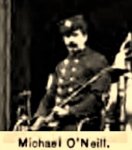

An interesting career has been that of MICHAEL O'NEILL, who drives and cares for the horses of this company. He was born in Ireland, on Nov. 25, 1851, and came to this country in 1866. His first position was that of hallboy in a New York hotel, and he then learned the trade of a carpenter. In 1869 he enlisted in the regular army, and served for five years in Troop M., 4th Cavalry. His first duty was at Fort Duncan, Tex., on the Rio Grande, and he afterward saw service at various points on the frontier in Indian Territory, Wyoming, and Nebraska. He was discharged at the end of his term of enlistment at the Red Cloud Agency, Nebraska, and a month later re-enlisted at Fort Hamilton. He then served five years longer in Light Battery C., 3rd Artillery. With this he saw service at Fort Hamilton, Atlanta, Washington, and Little Rock. While on the frontier he was in three Indian fights and had his fill of encounters with the redskins. After his final discharge from the army he returned to this city and served as a street car conductor for three years. But this was too humdrum an existence after life on the plains and in forts, and he became a fireman on April 15, 1882.

HENRY A. MAPES has been with Engine No. 5 since July, 1888. Before that hu was with Engine No. 7 for six years. He was born in New York City in Aug. 1853, and attended a private school in Broome Street. He was in the wholesale drug business in New York before becoming a fireman. His home is at No. 5o8 Atlantic Avenue.

FREDERICK JOHN MANNING is a native of Gibraltar, where he was born on July, 1835. At the age of fourteen he came to this country and became a clerk in a jeweler's shop. After seven years in this business he learned the trade of a machinist. He served in the Volunteer Fire Department in Brooklyn Engine No. 17. When the present department was organized he was appointed a paid fireman and after brief service with Engine, No. 1 he became connected with No. 5 Jan. 1870, and has since remained with it.

PATRICK J. LAFFERTY is a native of this city, where he was born on June 18, 1862. He was educated at Public School No. 27, in the Twelfth Ward. For several years he worked in stove foundries in New York and in Pamrapo, N. J. On May 20, 1889, he received his appointment to the fire force. He lives with his wife and two children at No. 571 Clinton Street.
BROOKLYN FIRE DEPARTMENT - STEAM FIRE ENGINE 5

ENGINE COMPANY NO. 5
Perhaps the most centrally situated of the two score headquarters of the fire-companies, upon which the city depends for protection, is the house of Engine Company No. 5, in Pierrepont Street near Fulton. Many hundreds of times have the doors been thrown open and the engine dashed forth to answer alarms from all parts of the city. Engine No. 5 responds to first-alarms in the territory in and contiguous to Fulton Street, from Clark Street to Hudson Avenue, which includes much of the most valuable property in the city. In this region are the public buildings, including the City Hall, Court House, Municipal Building, Hall of Records, and the new Federal Building; the principal places of amusement in the Western District, including the Academy of Music, Grand Opera House, Park Theatre, Star Theatre, and the recently completed Columbia Theatre; all the chief hotels of the city; such important structures as the Brooklyn Library, the Long Island Historical Society's building, the Hamilton and Germania clubhouses, the great dry goods houses, the offices of the principal banks and trust companies, a number of large churches, the Polytechnic and Packer Institutes, and the great office buildings surrounding City Hall Square. Property worth many millions of dollars is guarded first of all by this engine company. On second alarms it is called to the great warehouses on the waterfront and to the greater part of the Western District; while in response to third alarms and special calls it may be summoned to the Eastern District, and even to Greenpoint and East New York. Ever since the fatal and disastrous fire in the Brooklyn Theatre, at Washington and Johnson Streets, on Dec. 5, 1876, when 278 lives were lost, special precautions have been taken to avoid a repetition of the disaster even upon a small scale, and firemen are detailed from Engine No. 5, to attend each matinée and evening performance in the playhouses within its territory, to be in readiness to flood the stage and quench any incipient conflagration.
No. 5 is the only engine company housed on the Heights, and it traces its history back to the old Engine Company No. 14 of the Volunteer Department, established in Love Lane in 1846. Ten years later it removed to the present quarters. It was the crack company of the Volunteer Department and the sons of many of the best families on the Heights had been connected with it. Their house was expensively decorated and furnished, and they owned a fine engine. At present No. 5 is equipped with a fine Amoskeag engine, which has been in use for seven years. It is fitted with all facilities for the work of extinguishing fire. To draw the engine and tender four horses are stabled in the engine house. The names over their stalls are Tom, Jerry, Speed, and Dick. The same names are bestowed upon successive occupants of the stalls. One of the most knowing horses ever attached to the company was a strawberry roan, which was in service for nine years, an unusually long time, and was finally run over by an engine and killed. As Engine No.5 is the nearest to the City Hall it is the show company of the city, and visitors frequently have the horses and men called out to see how quickly they can start. The horses usually get exercise enough in going to the fires to which the engine is summoned, but sometimes the interval is so long that they have to be taken out for exercise. The members of No. 5 have taken part in many great fires. The most disastrous was that in the old Brooklyn Theatre. The scenes after the flames were under control and the bodies were being brought forth were such as to cause the stoutest firemen to draw back, but the members of No.5 stuck to their posts throughout the trying ordeal. Among the other large fires in which this company has taken an important part have been those in Weclisler and Abraham's dry goods house in lower Fulton Street ; in Ovington's art and crockery store; in the old Elm Place Congregational church, on the foundation of which the Grand Opera House was built; and in Smith, Gray, Co.'s clothing store. At the last named fire, No. 5 was one of the earliest to arrive and the men battled with the flames and smoke until nearly suffocated. On second and third alarms the company has been called to all the great fires in the city. Despite the perils incurred the company has never had a man killed on duty and only a few have been injured.

More than half the time since its organization as a part of the Paid Department the company was under command of Foreman SAMUEL G. HEUSTIS, whose recent promotion to the position of District Engineer, and assignment to the command of the district in which his old company lies, devolved the responsibility of the company temporarily on the Assistant Foreman.
VETERANS LONG HOUSED ON THE HEIGHTS
Assistant Foreman DAVID S. THOMAS was born in this city on June II, 1855 At the age of twenty three he was appointed a fireman, and was assigned to duty with Engine No. 17. On July i, 1889, he was transferred to Engine No. 4, and appointed Assistant Foreman. Since Feb. 5, 1890, he has been in his present position. He is a man marked for his fidelity to his post and the ability with which he discharges his duty.


An interesting career has been that of MICHAEL O'NEILL, who drives and cares for the horses of this company. He was born in Ireland, on Nov. 25, 1851, and came to this country in 1866. His first position was that of hallboy in a New York hotel, and he then learned the trade of a carpenter. In 1869 he enlisted in the regular army, and served for five years in Troop M., 4th Cavalry. His first duty was at Fort Duncan, Tex., on the Rio Grande, and he afterward saw service at various points on the frontier in Indian Territory, Wyoming, and Nebraska. He was discharged at the end of his term of enlistment at the Red Cloud Agency, Nebraska, and a month later re-enlisted at Fort Hamilton. He then served five years longer in Light Battery C., 3rd Artillery. With this he saw service at Fort Hamilton, Atlanta, Washington, and Little Rock. While on the frontier he was in three Indian fights and had his fill of encounters with the redskins. After his final discharge from the army he returned to this city and served as a street car conductor for three years. But this was too humdrum an existence after life on the plains and in forts, and he became a fireman on April 15, 1882.

HENRY A. MAPES has been with Engine No. 5 since July, 1888. Before that hu was with Engine No. 7 for six years. He was born in New York City in Aug. 1853, and attended a private school in Broome Street. He was in the wholesale drug business in New York before becoming a fireman. His home is at No. 5o8 Atlantic Avenue.
FREDERICK JOHN MANNING is a native of Gibraltar, where he was born on July, 1835. At the age of fourteen he came to this country and became a clerk in a jeweler's shop. After seven years in this business he learned the trade of a machinist. He served in the Volunteer Fire Department in Brooklyn Engine No. 17. When the present department was organized he was appointed a paid fireman and after brief service with Engine, No. 1 he became connected with No. 5 Jan. 1870, and has since remained with it.
PATRICK J. LAFFERTY is a native of this city, where he was born on June 18, 1862. He was educated at Public School No. 27, in the Twelfth Ward. For several years he worked in stove foundries in New York and in Pamrapo, N. J. On May 20, 1889, he received his appointment to the fire force. He lives with his wife and two children at No. 571 Clinton Street.
Attachments
Last edited:
ENGINE 205/LADDER 118 FIREHOUSE 74-76 MIDDAGH STREET BROOKLYN HEIGHTS, BROOKLYN DIVISION 11, BATTALION 32 “FIRE UNDER THE BRIDGE”
BROOKLYN FIRE DEPARTMENT - STEAM FIRE ENGINE 5

WILLIAM CHARLES DEVINE was born in Donegal, Ireland, Aug. 16, 1865. He drove a milk wagon, and later a truck for Jewell's mills, before he was made a fireman on Dec. 10, 1891.

DOMINICK SWANTON was born in the Sixth Ward on Sept. 23, 1861, and he lives with his wife and four children at No. 70 Fourth Place. He worked as a machinist until he entered the service of the city as a fireman on Sept. 15, 1887.

WILLIAM H. O'BRIEN was born in Bristol, England, on Oct. 27, 1854. After coming to this country he engaged in several sorts of business until he finally settled down as a fireman on April 28, 1882. About a year later he had the misfortune to break his right leg at the fire in Harbeck's stores. While going to a fire on March 15, 1885, he broke his other leg. Despite these accidents there is not a sounder man on the force.

WILLIAM L. MEALY, who was born in this city on Aug. 10, 1857, has been a fireman since Nov. 17, 1890. Before that time he worked in the Produce Exchange, in New York. His home is at No. 46 Carroll Street.
WILLIAM HENRY D'OLIER, is a son of Superintendent D'Olier, of the Brooklyn City Railroad Company, and was born in Brooklyn, on Aug. 18, 1863. He was educated at Public School No. 15, and engaged in the manufacture of printing inks and in the paint business before his appointment as a fireman on April I, 1890. He is unmarried and lives at No. 25 Rockwell Place.

PHILIP E. MILLER was born in this city on Jan. 28, 1863. He received his appointment as a member of No. 5 on Dec. 8, 1891, and is rapidly gaining experience in his new line of work.
-from Our Firemen: The Official History of the Brooklyn Fire Department, From the First Volunteer to the Latest Appointee
BROOKLYN FIRE DEPARTMENT - STEAM FIRE ENGINE 5
WILLIAM CHARLES DEVINE was born in Donegal, Ireland, Aug. 16, 1865. He drove a milk wagon, and later a truck for Jewell's mills, before he was made a fireman on Dec. 10, 1891.
DOMINICK SWANTON was born in the Sixth Ward on Sept. 23, 1861, and he lives with his wife and four children at No. 70 Fourth Place. He worked as a machinist until he entered the service of the city as a fireman on Sept. 15, 1887.

WILLIAM H. O'BRIEN was born in Bristol, England, on Oct. 27, 1854. After coming to this country he engaged in several sorts of business until he finally settled down as a fireman on April 28, 1882. About a year later he had the misfortune to break his right leg at the fire in Harbeck's stores. While going to a fire on March 15, 1885, he broke his other leg. Despite these accidents there is not a sounder man on the force.

WILLIAM L. MEALY, who was born in this city on Aug. 10, 1857, has been a fireman since Nov. 17, 1890. Before that time he worked in the Produce Exchange, in New York. His home is at No. 46 Carroll Street.
WILLIAM HENRY D'OLIER, is a son of Superintendent D'Olier, of the Brooklyn City Railroad Company, and was born in Brooklyn, on Aug. 18, 1863. He was educated at Public School No. 15, and engaged in the manufacture of printing inks and in the paint business before his appointment as a fireman on April I, 1890. He is unmarried and lives at No. 25 Rockwell Place.

PHILIP E. MILLER was born in this city on Jan. 28, 1863. He received his appointment as a member of No. 5 on Dec. 8, 1891, and is rapidly gaining experience in his new line of work.
-from Our Firemen: The Official History of the Brooklyn Fire Department, From the First Volunteer to the Latest Appointee
Last edited:


